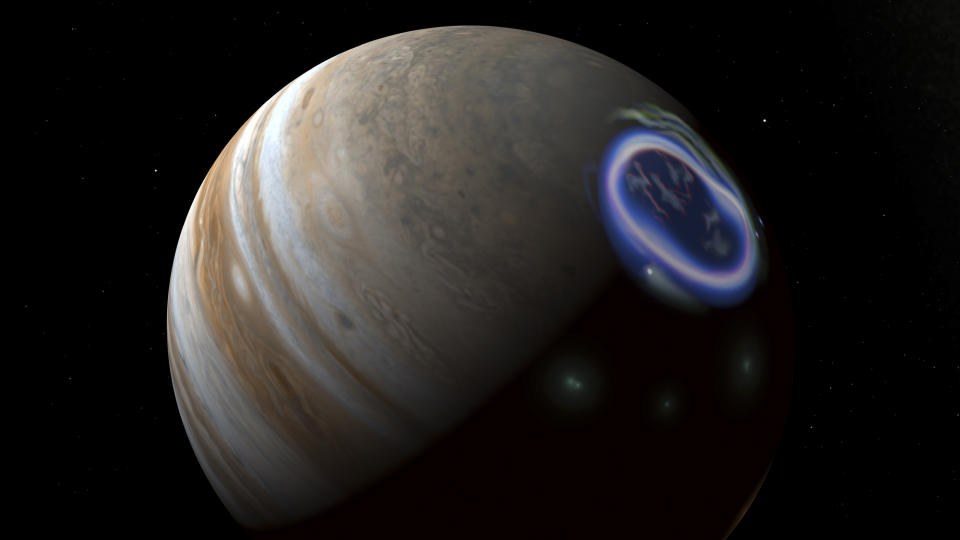What is the Aurora Borealis? Our guide to the magical phenomenon

When darkness falls in the spectacular Arctic region, an otherworldly phenomenon often lights up the night sky. The Aurora Borealis is one of Earth’s most spectacular and magical sights. Also known as the Northern Lights, it's a spectacle on many people’s bucket lists and the chance of catching the aurorae has contributed towards a huge boom in the number of people travelling to the Arctic in recent years.
When the Aurora Borealis occur, ethereal curtains of usually green, and often red and violet light dance high in the night sky. These luminous streams are gloriously dynamic, shifting in hue and appearance. Sometimes, the sky glows with a cornucopia of color; at other times the effect is more subtle, with ghostly greens intermingling with the stars.
However, the Northern Lights are somewhat unpredictable and there’s no guarantee of seeing them even if you’ve travelled hundreds of miles and pitched your camping tent in the middle of the Arctic's frozen wastes, far from any light pollution. This makes the sight of them all the more enchanting. So, what is the Aurora Borealis exactly? And how can you stack the odds of actually witnessing it in your favor?
Meet the expert
What is the Aurora Borealis?

The Aurora Borealis is the result of the interplay between the Sun’s solar wind, Earth’s magnetic field and gases in our atmosphere. In the region around the North Pole, charged particles from the solar wind accelerate along Earth’s magnetic field lines. The energized particles collide with atoms and molecules in our upper atmosphere, emitting the light we see as the aurora.
The dazzling range of color is created by the different gas particles present, way above our heads. Green aurorae are the most common, caused by the solar wind's particles reacting with oxygen at around 100 kilometers above the Earth’s surface. Mesmerising.
How can you see the Aurora Borealis?
To witness the majesty of the Aurora Borealis, you’ve got to be in the right place at the right time. Fortunately, many of the best places to the see the Aurora Borealis are also magnificent places for hiking adventures and encounters with wildlife. Lace up your winter boots, don your best down jacket, ready your binoculars and cross your gloved fingers for solar activity.
The places you’re most likely to witness the Northern Lights are often just as spectacular for their landscapes. There's Iceland, the land of fire and ice; northern Scandinavia, with its awe-inspiring peaks and fjords; Finland, with its endless boreal forests; Greenland, breathtakingly remote and unspoilt, northern Canada, a staggering wilderness; and Alaksa, a white wonderland of towering mountains. Almost unbeliebably, when conditions line up just right, the Northern Lights have been visible as far south of Northern England.

It’s not only where but when that’s key to catching the phenomenom. Head for the ‘Arctic Capital’ of Troms? in June and you’ll be met with 24 hours of daylight, which isn’t exactly conducive to seeing a phenomenon where darkness is essential.
The best times of year to see the Aurora Borealis are around the spring and fall equinoxes, which occur in March and September respectively. This is when Earth’s magnetic field and the magnetic field of the solar wind are in optimum alignment for aurorae to occur. As well as the equinoxes, the winter months between September and March are also good bets, as they provide the darkest skies, enhancing the odds of seeing the phenomenon.

You're also going to have to adopt a night owl mentality. The golden hour for witnessing the Northern Lights is between 11pm and midnight, though there’s a good chance anytime between 9pm and 2am. You'd better fill the hiking flask with something warm and caffeinated.
What is the Aurora Australis?
Anyone who knows how a compass works, or indeed how any magnet works, will know that there is always a north pole and a south pole. Well, the same is true for Earth, so it makes sense that aurora occur towards the South Pole as well as up in the Arctic.
Australis is a Latin word meaning ‘of the south’, in the same way that boreal means ‘of the north’. By far your best chance of seeing the Aurora Australis is in Antarctica. However, when the solar cycle leads to strong solar winds, the phenomenon can also be visible from New Zealand, Australia, Chile, Argentina and even South Africa. The further south you are, the better, so you’ve got much more chance of witnessing the spectacle in Patagonia or Tasmania than you have of catching it in Buenos Aires or Brisbane.

Do other planets have auroras?
Don’t think you’re anything special Earth! Well, as a matter of fact, our planet is remarkable in many ways. However, when it comes to the aurora, Earth isn’t special. Our planetary neighbours Venus and Mars, as well as the gas giants of Jupiter, Saturn, Uranus and Neptune, all boast their own unique celestial light shows. Jupiter’s are the most powerful, as the giant has a magnetosphere around 20,000 times as strong as Earth’s.

